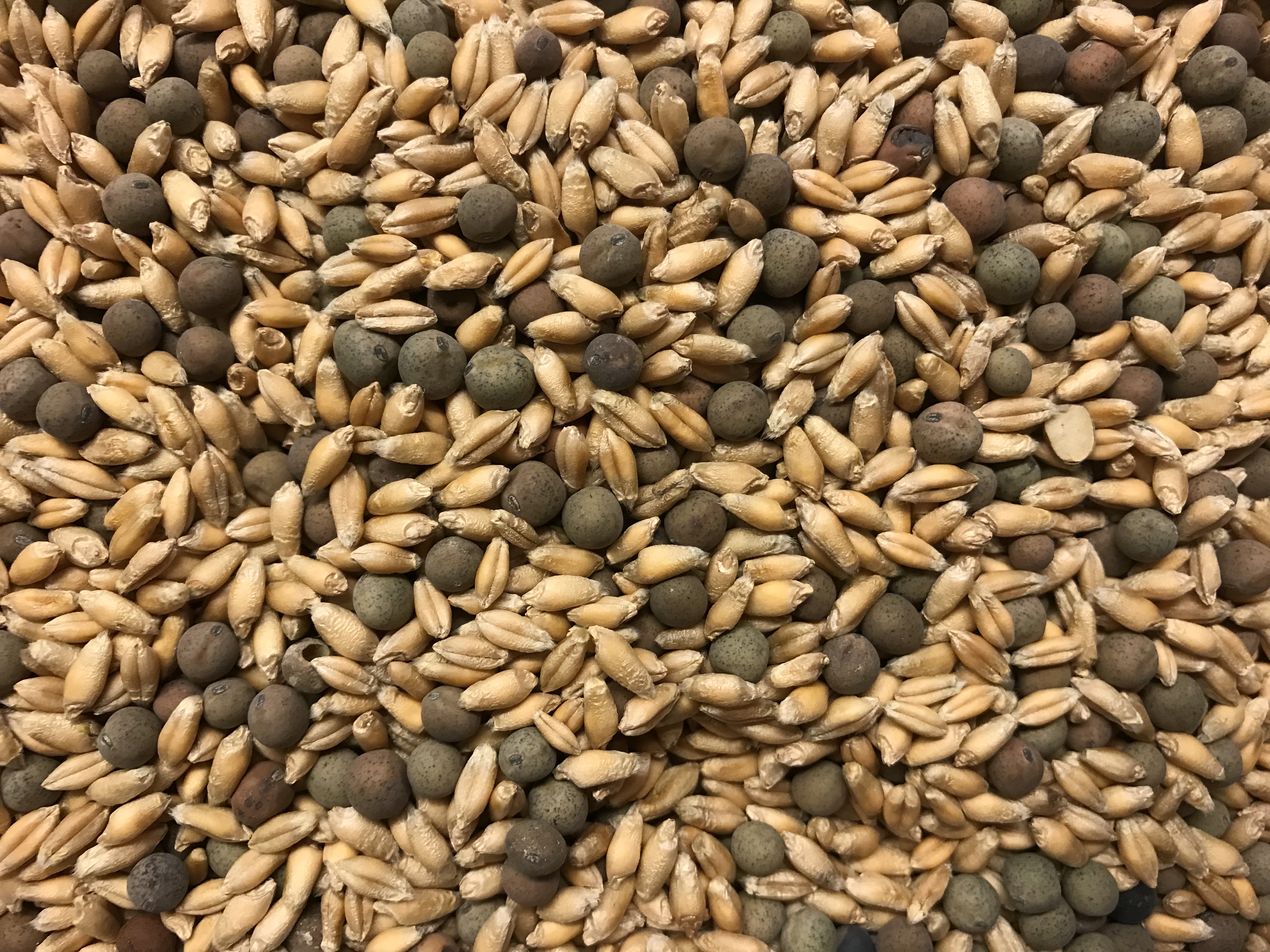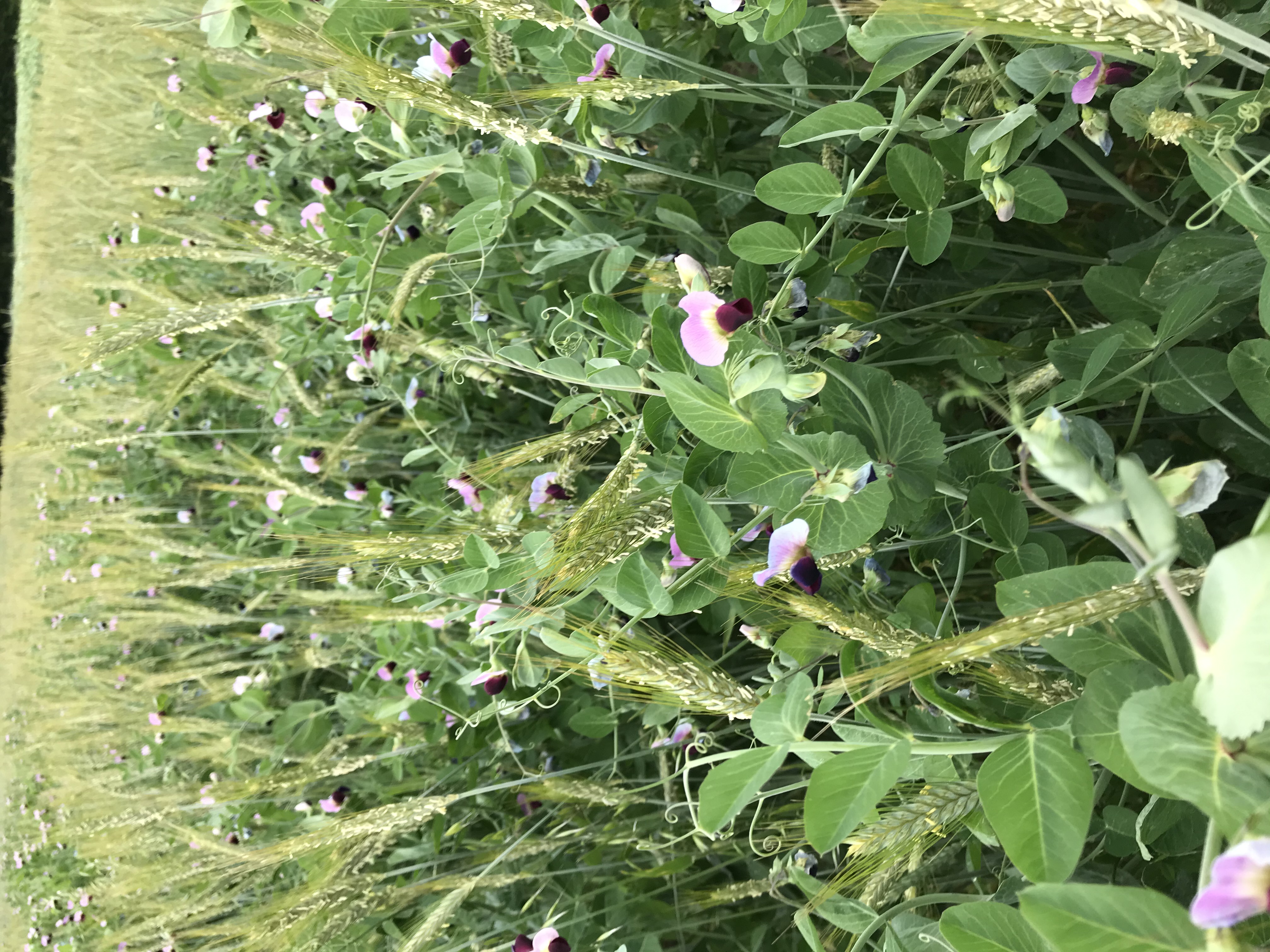International
Catch crops
V-Max® ERBSENTRITICALE V-Max® Futter- und Biomassemischungen
Advantages
... winter-hardy mixture for WCS (whole crop silage) and grain use
Name addition
V-Max® Futter- und Biomassemischungen
- Good weed suppression and high nitrogen fixation
- Flexible use possible: as protein-rich total plant silage for on-farm fodder production or for grain harvesting
- WCS (whole crop silage) DM yields up to 145 dt/ha, grain yields up to 40 dt/ha possible
- Savings on mineral fertiliser and crop protection measures without significant yield losses
- Winter triticale BILBOQUET offers a higher stability in a mixture than other cereals.
- Winter forage pea PIONIR increases the protein content in the forage
- Over winter, the crop provides excellent erosion protection and protects against nutrient leaching
- In the following year, the pea flower enriches the landscape and provides food for insects
- Increases biodiversity in the soil and in crop rotation
Blend details
Weight %
23 % Winter forage pea PIONIR
77 % Winter triticale BICROSS
77 % Winter triticale BICROSS
Free of crucifers
Yes
Free of legumes
No
Winter hardy
Yes
General description
General description
| - - - - | - - - | - - | - | 0 | + | + + | + + + | + + + + |
---- = very low resistance/early/short, ++++ = very high resistance/late/long
Agronomic features
Weed suppression









Protection against erosion









Ground water protection / Nitrogen conservation









Humus formation









Cold- and frost resistance









Drought tolerance









Type of root
Tuft root
Rooting depth
80 cm
Representative
P.H. Petersen Saatzucht Lundsgaard GmbH
All variety descriptions have been prepared in accordance to the best of our knowledge, considering trial results and observations. A guarantee or a liability in individual cases is not possible, because the growth conditions are subject to substantial fluctuations.
Cultivation
Crop rotation suitability
Maize
++
Cereals
+
Oilseed rape
++
Sugar beets
+
Potatoes
Intensive crops
Legumes
Cultivation recommendations
Recommended sowing rate
150 - 170 kg/ha
Sowing depth
1 - 2 cm
Sowing period
Mid September until mid October
Fertilization
An early fertilization to promote the initial development is recommended.
Crop protection
Usually there is no plant protection required
Sowing method
Drill sowing ensure high crop emergences
Harvest
From standing crop; side knives are recommended
Harvest date
Yellow ripeness in mid to end June or treshing
Representative
P.H. Petersen Saatzucht Lundsgaard GmbH
All variety descriptions have been prepared in accordance to the best of our knowledge, considering trial results and observations. A guarantee or a liability in individual cases is not possible, because the growth conditions are subject to substantial fluctuations.


